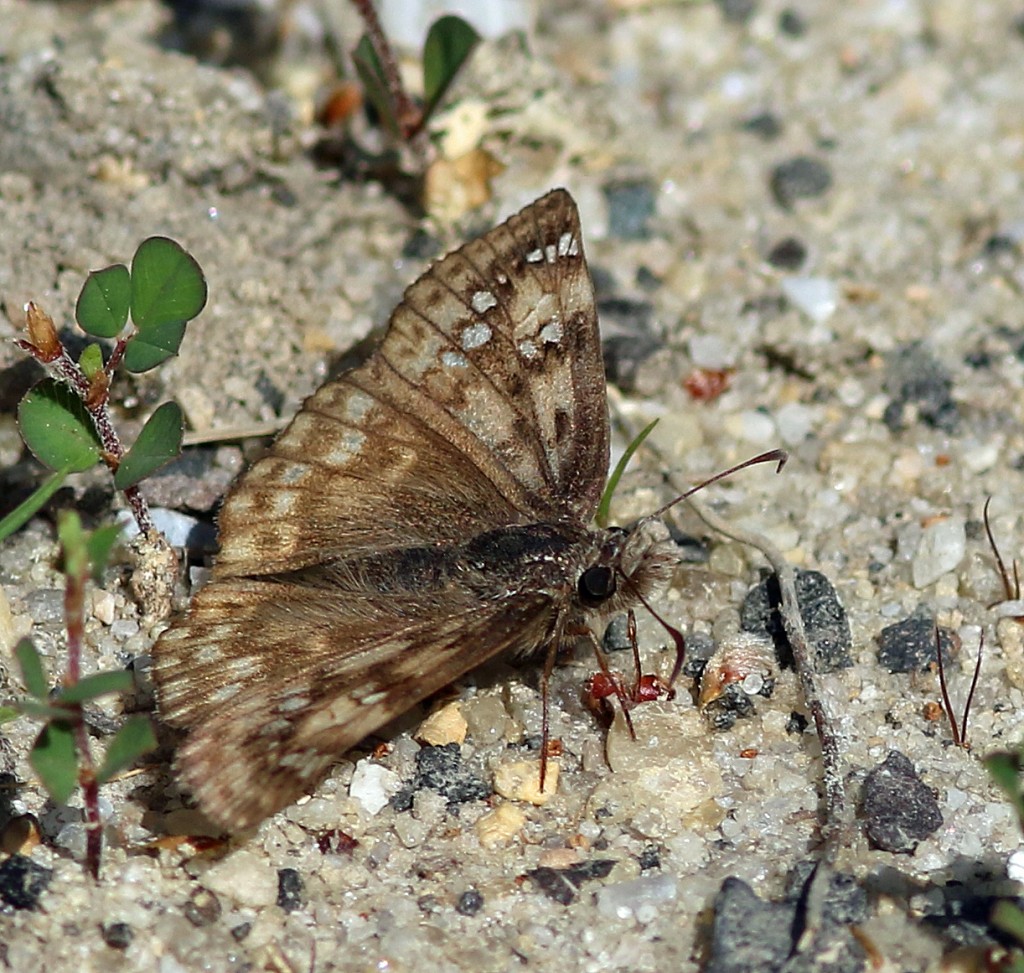Harvey Tomlinson photo’d these two worn skippers on a trip to Cumberland County on May 31, and he has invited comments and analysis on their identities.
If you are willing to identify their species and provide some details about the tell-tale field marks, click on “Leave A Reply” below.
Thank you!
jc
PS: See the two blog posts below for details about our next two field trips: to Parker Preserve on June 13, led by Stephen Mason, and to Medford Leas on June 20, led by Chris Herz. (Chances are good that, among our other finds, we might encounter skippers that look like these two ID challenges.)



I’m interested to read other replies, but I sent a note about these to Harvey and suggested that the duskywing species is a female Horace’s or perhaps Juvenal’s, and the skipper is a worn Cobweb Skipper.
I would agree with Steve on these two skippers. The first image appears to be a very worn female Horace’s Duskywing based on the prominent glassy spots on the FW and the late date of 5/31. The cobweb skipper appears to be a worn male. Worn butterflies present an interesting challenge. Even slight scale wear can greatly influence identification. Thanks for the images Harvey!
Dave
I am just now getting to these photos. Wow! I thoroughly enjoy these shared photos. I agree that the second image is a cobweb skipper. After reviewing many of my photos and spending way too much time on the first image, I have to say that I cannot tell if it is a worn female Juvenal’s or a female Horace’s. I will lean towards Horace’s because of the placement of the light area half way up on the hind wing, and also the way that light spot is patterned. Thanks to Harvey and Jack C.